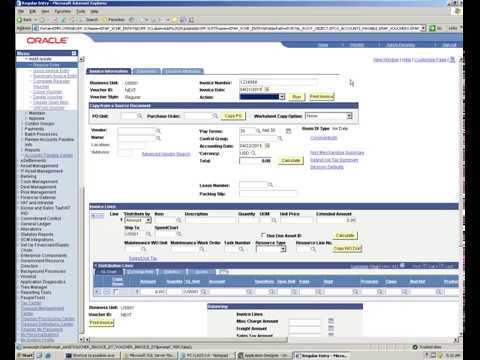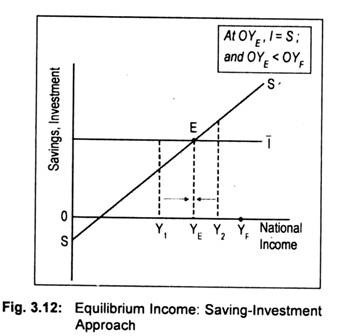post closing entries to t-accounts: Journal Entries Notes:Rules, Types of Accounts,Imp Terms, Formats
Contents:

Only those which pertain to a business entity are included. When accounting subjects customer invoices, these invoices are published in numerical series for internal management. If a business even administers paper checks, they’re regulated and recorded in sequential numerical sequence. Any inaccurate statements are withdrawn and maintained to control the numerical series.

Accounting is a comprehensive system to collect, analyze, and communicate financial information. These businesses use different types of journals based on their operations. However, journals are broadly classified into general and special.

If there were the entry of an incorrect amount on both sides, it also remains undetectable. It tells all about the profits and losses incurred by an organization in a particular period. This information is necessary for the proper growth of the organization. It provides an overview of the financial health with the complete transaction of any organization. It has a complete list of the total of all general ledgers.
FINANCIAL MANAGEMENT & COST ACCOUNTING
The post closing entries to t-accounts cycle is a multi-stage procedure designed to transform all of your company’s raw financial information into Financial Statements. Yes, to complete the accounting cycle, you’ll need to run three trial balance reports. Accounting software automatically manages closing accounting entries for you. However, you must manually write closing entries every accounting span if you do not own accounting software.
How the Fall of Roe Turned North Carolina Into an Abortion Destination – The New York Times
How the Fall of Roe Turned North Carolina Into an Abortion Destination.
Posted: Sat, 04 Mar 2023 16:42:49 GMT [source]
It’s important that your trial balance and all debit balances and all credit balances in your general ledger are the same. If they’re not, you’ll have to do some research to locate the errors. The differences between the adjusted and post-closing trial balances include the following. Usually, a trial balance lists the general ledger balances before any adjustments. It occurs when companies enlist those balances at the year-end.
Similar ledger accounts can be made for other balance sheet components such as payables, inventory, equity capital, non current assets and so on. For instance, XYZ Co. transfers cash from its main account to a subsidiary. Journal entries are the way to record different financial transactions. In order to pass a journal entry, the details of a transaction are to be entered into the company’s books.
Adjusting entries
The debit balances are listed in the left hand column and the credit balances in the right hand column’. If the debit side and credit side of the trial balance are equal, it is proved that the account books are arithmetically correct. Construct the adjusting journal entries to rectify mistakes and reflect any distinctions mentioned in reconciling balance sheet accounts. After documenting and adjusting entries and publishing them to the general ledger, total debit balances should equal total credit balances as an accounting control procedure. You can check by executing and examining an adjusted trial balance statement. This is the first step to take in using the income summary account.

An essential point about a transfer https://1investing.in/ journal is that third parties aren’t involved in the transactions. As MyCoffeeMakers pays in the future, the cash account will display a corresponding credit due to the decrease in available cash. Simultaneously, the accounts payable will display a corresponding debit, as the amount the company owes to the vendor will keep on decreasing with time. Therefore, the company will record a debit of INR 10,00,000 in raw materials. On the other hand, the cash account will record a credit of INR 1,00,000, which is the amount that was paid during the transaction.
Journal Proper Format
For example, a company’s payroll has massive numbers of journal entries that can be taken written in compounded form. Accounting cycles are used by businesses and associations to register transactions and formulate financial statements. The standardized accounting cycle approach is essential because it enables business owners, small businesses, and designated enterprises to close their books for the accounting period. It also permits the development of financial information to perform financial statement analysis and control the business. Suppose the account shows a net loss of $5,000. You close the account by crediting Income Summary with $5,000 and debiting Retained Earnings for the same amount. Because the income summary clears the balances of the revenue and expense accounts, it is sometimes called a clearing account.
5 Ways to Speed Up the Year-End Close: Metric of the Month – CFO.com
5 Ways to Speed Up the Year-End Close: Metric of the Month.
Posted: Wed, 08 Feb 2023 08:00:00 GMT [source]
Missing any of these incorrect balances will provide inaccurate information. Mistakes of an unbalanced trial balance will be carried forward to the Profit and Loss Account as well as the Balance sheet. Hence, we will be unable to get true and reliable results from these Financial Statements.
The most important point to note about journal entries in accounting is that they follow the double-accounting method. That means, for every recorded entry two different accounts are affected. A transaction not entered in the books of account or ledger will not have entries on both sides. Adjustment entries are initially passed through the journal and followed by posting in ledge accounts and finally in the trial balance.
They are posted to the general ledger after being sorted into numerous charts of accounts and verified for their accuracy. This general ledger provides decision-makers with precise information, enabling them to brainstorm effective strategies. Journal entries consist of all data about a particular business transaction, including the amount to be debited and credited, accounts impacted, and a brief synopsis of the transaction. It may also contain several other details, such as tax details and affected subsidiaries. It is a very important step in which you examine the source documents and analyze them. For example, cash, bank, sales, and purchase related documents.
Temporary accounts are used to record accounting activity during a specific period. For example, $100 in revenue this year does not count as $100 of revenue for next year, even if the company retained the funds for use in the next 12 months. The purpose of the closing entry is to reset the temporaryaccount balancesto zero on the general ledger, the record-keeping system for a company’s financial data. Temporary accounts are zeroed out at the end of the accounting period and start with a zero balance in the next period.

In the next period, the account will start with the balance as “To or By Balance brought down”. At the time when you close your books for the current accounting cycle, you zilch both the revenue and expenses account balances. After you have fastened any out-of-balance issue and entered any late statements or accrual entries, you’ll want to run an adjusted trial balance. This gives you the most up-to-date balances for your entire general ledger accounts. For instance, consider the total of the credit column of the Trial Balance of Rs 10,20,000. This is calculated after recording all the closing credit balances of various accounts of ledger.
The accounting cycle concentrates on historical circumstances and confirms that incurred financial transactions are reported correctly. Alternatively, the budget cycle links to future operating performance and planning for coming transactions. The accounting cycle helps to produce data for external users, while the budget cycle is used for internal management objectives. Annual financial statements are usually prepared at the end of the year.
If any transaction was not present in the system, then this error cannot be detected in this balance sheet. These six accounting types have separate functions in accounting. However, together they provide an accurate, error-free, and objective financial standing of a business. A journal entry includes data specific to all the subsidiaries and currencies involved in the transaction. Here’s how our above coffee machine transaction will look in the journal entry. We can use this language to communicate financial transactions and their results.
Suppose the owner of a business decides to invest INR 1,00,000 in cash in his business. Then, there are three main steps to pass the correct journal entry. At the end of the journal entry, the debit balance should be equal to that of the credit side of the journal entry.
For example,long-term loans, bonds payable, debentures, etc. In the journal, the transactions are recorded sequentially. Conversely, in the ledger, the transactions are recorded on the basis of accounts.
- One of the major duties of a bookkeeper is to keep the trail of the entire accounting cycle from start to finish.
- Credit increases the owner’s equity, liabilities, and revenues when credited.
- The recording and posting of most transactions will occur automatically when sales and vendor invoice information is entered, checks are written, etc.
- The accounting process is a series of steps that begin with a transaction taking place and ends with closing of the account books at the end of the year.
- In this chapter, we will discuss the steps involved in the accounting cycle.
- Receivables account is debited because it has the effect of increasing the receivable asset.
The accounting cycle is a frequent workflow, and a bookkeeper follows each of the steps as they happen across the year relatively than doing them all at once. This further makes certain precision since proceedings are less likely to be forgotten or recorded inaccurately from memory. Also, you must credit your earnings summary account and debit your retained profits account if your earnings are less than your expenditures.
An adjusting entry for an accrued expense involves an EXPENSE account and a LIABILITY . An unearned revenue is a revenue that has been collected but has not been earned. An adjusting entry for an unearned revenue involves a LIABILITY account and a REVENUE account. When the magazine is mailed to the customer, the unearned revenue would be earned.
The accounts that need to start with a clean or $0 balance going into the next accounting period are revenue, income, and any dividends from January 2019. This makes sense because all of the income statement accounts have been closed and no longer have a current balance. Since expenditures are reduced by credits, you must credit the reserves and debit the income summary account. Therefore, you must debit your revenue reserves to decrease it, which implies you must also credit your earnings summary account.
